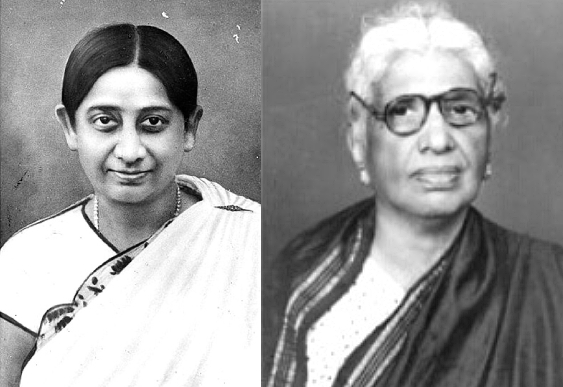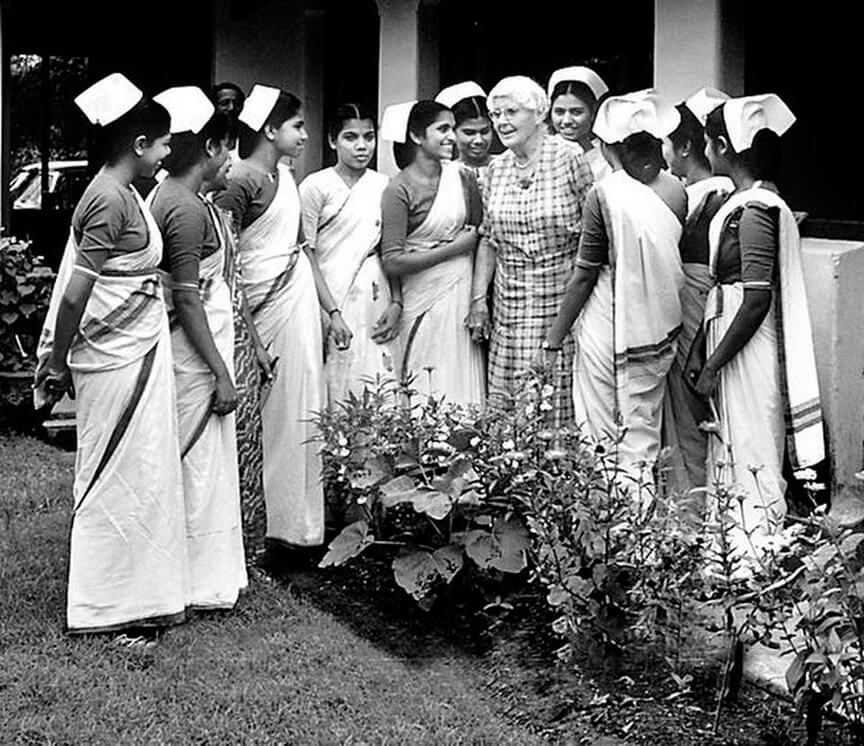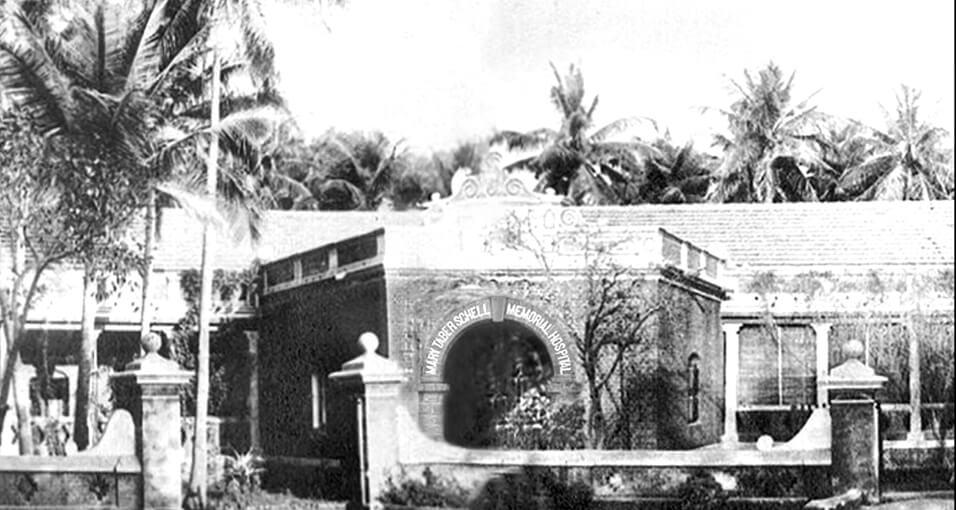Registered with the Registrar of Newspapers for India under R.N.I 53640/91
Vol. XXIX No. 18, January 1-15, 2020
Early women doctors and the various associations that worked towards better healthcare facilities in India
Ramya Raman and Anantanarayanan Raman
(Continued from last fortnight)
At the inauguration of the First All-India Obstetrics and Gynaecological Congress, presided over by Ida Scudder of Vellore, Guha remarks,
‘…The practice of female-oriented midwifery had deep roots in Bengali society which accounts for the fact that despite Bengal being the bastion of British imperial power in India, it lagged behind Madras in institutionalising midwifery in the nineteenth century.’
The Maternity Hospital (MH), while remaining as a teaching department of Madras Medical College (MMC), was the first institution in India to offer the postgraduate Diploma in Gynaecology and Obstetrics (DGO) in 1930. A children’s ward was added to this hospital in 1949 with 28 beds, thanks to the efforts of Madras pediatrician Santanuri Thirumala Ãchar. Subsequently this ward grew, thus rendering the name ‘Egmore Women & Children Hospital’ to the MH. The concept of combining health care of women and children was so unique in India that this hospital came to be referred as the ‘Egmore model’ in medical circles.
Medical help to women by Christian missionaries
At least 400 years ago, different Christian missionary organisations saw helping the sick and destitute as an opportunity to evangelise. From the 1620s, several trade posts (‘factories’) established on the initiative of Frederick IV, the King of Denmark, existed in India with the sole purpose of spreading the Gospel. Among the various trade posts set up, the Evangelical Lutheran Mission post at Tranquebar (Tarangampadi, Tamil Nadu) was conspicuous. Samuel Benjamin Cnoll (1705–1767), a medical doctor trained in Halle, Germany, supervised the Royal Danish Mission Hospital in Tranquebar between 1740 and 1767, which included a laboratorium chymicum, an early version of a modern pharmacy. A Western medicine-based ‘hospital’ managed by the Jesuits existed in Pondichéry in 1690. A military hospital – a formal, large establishment, adjacent to the French East India Company Garden, Pondichéry – came up opposite to the Church of Sacred Heart of Jesus (a Basilica presently) in 1738, managed by the Ursuline Sisters of the Catholic Church from 1755. Sam Nesamony refers to the work of missionaries in colonial southern India as ‘medical philanthropy’. He says:
‘The close association between religion and medicine, and the fact that the process of evangelisation was not especially successful, forced the attention of the missionaries to divert their attention toward health care and form medical missions, which offered a ‘divine method’ of healing as another way to forward their goal of evangelization. Accordingly medical dispensaries, missionary movements against … disease … mobilized a powerfully challenging social order that was perceived by the disadvantaged masses as a response to their genuine needs, including those for the health of the body and the enlightenment of the mind.’
The London Missionary Society (LMS) realigned its objective of evangelisation through health care in the 19th Century India. John Coldstream (1806–1863), a Scottish physician, spoke on this topic at the Edinburgh Medical Missionary Society, in 1855, referring to LMS’s medical efforts in helping Indian women. One sparkling example illustrating the role of medical missionaries in India comes from the life and work of Ida Sophia Scudder of Vellore, Tamil Nadu.
Ida Scudder’s work in Vellore progressed from the inspiration she derived from her parents, John and Sophia Scudder. John was a medical doctor and a missionary belonging to the Arcot Mission, which reported to the Re-formed Church in America. When Ida Scudder (1870–1960) was spending time with her parents in Katpaadi, Tamil Nadu, as a secondary school student on vacation, a touching incident occurred. According to the Australian Friends of Vellore:
‘One eventful night in 1890, Ida, then a young girl visiting her missionary parents in South India was asked to help three women from different families struggling in difficult child-birth. Custom prevented them from accepting the help of a male doctor and being without training at the time Ida herself could do nothing.’
After medical training at Cornell, USA, Scudder returned to India and established a one-bed clinic for women in Vellore in 1900, which grew as the 40-bed Mary Taber Schell Memorial Hospital (for women) in 1902, and subsequently as Christian Medical College and Hospital (CMC&H). Scudder’s mission was to provide quality care to women and children. She constructed her life’s task on the philosophy that she needed to train women to help women, which included the first setting up of a formal nurse-training programme for women in Vellore in 1909. She opened the Missionary Medical School for Women offering L.M.P. (Licensed Medical Practitioner) diplomas in 1918.
While talking about Scudder and CMC&H, a brief reference to Paul Wilson Brand (1913–2003), an orthopaedic surgeon attached to CMC&H and his immense contributions to the surgical management of deformations caused by leprosy is but necessary. Brand established, in the 1940s, that patients of leprosy hurt themselves because they lost sensation due to the disease. This finding was a major breakthrough in the understanding of the aetiology of leprosy and its management.
Institutionalised medical assistance for women
Lady Dufferin Association
Hariot Dufferin (Hariot Georgina Hamilton-Temple-Blackwood, 1843–1936), wife of Frederic Dufferin, the Viceroy of India, campaigned to improve medical support for women in the country in 1884. Her efforts fructified with the establishment of the ‘National Association for Supplying Female Medical Aid to the Women of India’ (popularly, ‘Dufferin Fund’, ‘Dufferin Association’) in 1885. Dufferin passionately referred to this scheme as ‘my female-medical scheme’. The LDA aimed at providing medical support and relief to Indian women, building women’s hospitals, and encouraging women to study medicine. To some Indian men of high social status and influence, this initiative was hard to accept, whereas a few others supported it. Those who opposed this project argued that it was ‘yet another intrusion by the colonial government into their private lives’.
A group of women doctors from Bombay led by a Briton – Annette Benson, who supervised the Cama Hospital – formed the Association of Medical Women in India (AMWI) in 1907. It was critical of the racial approach prevalent in the operations of the LDA. According to AMWI, priorities to European women were greater than what was offered to their Indian equals; qualified Indian women doctors were posted in remote locations with either little or no basic amenities. A general criticism was that the LDA served as an evangelical organisation. Benson, the first President of AMWI, committedly worked towards raising its reputation in international forums. Complaints such as undue requirements of subordination to men, unlawful sudden dismissals, lack of incremental rates of pay and work-related and study-leave rules, provisions for retirement were frequently heard.
Women’s Medical Service for India
The Government of India (GoI) considered addressing the legitimate grievances and improving the status of medical women serving under the LDA. One decision made by the GoI was not to create a separate service of medical women, similar to the Indian Medical Service.
PIONEERING WOMEN DOCTORS
However, an annual grant of £10,000 towards establishing a new service of medical women under the Central Committee of LDA, named the Women’s Medical Service for India (WMSI), was approved based on the proposal of Charles Pardey Lukis, made at a meeting held in Simla in 1912. The WMSI was a vague equivalent of the prestigious Indian Medical Service, but intended for women and run by women, although it did not formally exist. Women doctors who served under the aegis of WMSI used ‘WMSI’ in the list of academic titles after their names, similar to the Indian medical servants of that period using ‘IMS’ in their academic title list.
WMSI in the first instance was to include 25 first-class medical women, one-fifth of whom will form the leave reserve. Its members were to be under the direction of the Central Committee of the LDA. Lukis also spoke elaborately on pay conditions, required qualifications, leave rules and other requirements.
The newly established WMSI facilitated improvement of working conditions of women doctors in the whole of India. It played a key role, especially during World War II. Overall, the AMWI and WMSI contributed to better health management of Indian women and improved the status of Indian women doctors. AMWI and WMSI worked towards integrating every fragmented service committed to women’s health care throughout India. Margaret Balfour (1866–1945), another Briton in Bombay, was appointed as the first chief medical officer of WMSI in 1918. She played a pivotal role in developing education of women doctors in India and also developing obstetrics and gynaecology as a specialist training programme in the country. Along with Ruth Young, she wrote The Work of Medical Women in India in 1929, for which Mary Scharlieb wrote the foreword. This book describes how the Dufferin Fund Project panned out in India. In 1933, the Indian Medical Council standardised medical education in the country. Most significantly, many women came forth to study medicine, unlike earlier days. It distinguished licentiates (LMP, LMS) from degree holders (MBCM) in terms of quality control.
 Two early women pioneers of Madras at this time were Hilda Lazarus and Muthulakshmi Reddy.
Two early women pioneers of Madras at this time were Hilda Lazarus and Muthulakshmi Reddy.Hilda Mary Lazarus (1890–1978) was the first Indian Christian to qualify as a doctor. Born in Visãkapatnam, Andhra Pradesh, Lazarus, after earning a BA from the Madras Presidency College, completed her MBCM from MMC and qualified for memberships of the Royal Colleges of Surgeons (London and Dublin), joined as an obstetrician – gynaecologist in Lady Hardinge Medical College & Hospital, New Delhi, and later became its first Indian Principal. She was the first woman medical officer in government service to receive her appointment to WMSI. She worked at the Dufferin Hospital, Calcutta, for several years and retired in 1947.
 Dr. Ida Scudder with the nurses at the CMC.
Dr. Ida Scudder with the nurses at the CMC.On the request of Ida Scudder, Lazarus directed CMC&H between 1948 and 1954. The Lazarus Ward in Kasturba Gandhi Hospital for Women in Triplicane celebrates her contributions to women’s health care in India.
Muthulakshmi Reddy (1886–1968), born in Pudukkotai, Tamil Nadu, joined MMC in 1907 and graduated with an MBCM in 1912. She was influenced by Annie Besant and Mohandas Gandhi. She constantly worked for the welfare and development of women. In 1927, she was nominated to the Legislative Council of Madras and was the Vice-Chair of the Council, which she quit in 1930 protesting against Gandhi’s arrest for defying the Salt Law. Muthulakshmi Reddy was solely instrumental in abolishing the abhorrent practice of dévadãsi system and in restricting child marriages, then rampant in Madras Presidency, and in developing support facilities for destitute women (e.g. Avvai Home, Chennai). Touched by her sister’s death due to cancer, she established a cancer hospital in Madras in 1952, which has blossomed today as the Adyar Cancer Institute (ACI), toweringly standing under the inspirational mentorship of V. Shanta. ACI celebrates the name and greatness of this extraordinary Madras woman, Muthulakshmi Reddy.
Conclusion
This note is an appreciation of those great women of Madras, who blazed new trails in the health care of women in 1850–1930. In terms of exclusive hospitals for women’s health care and needs, Madras pioneered as early as 1844 with the establishment of the MH, which functions today – 175 years later – as the Institute of Obstetrics & Gynaecology and Government Hospital for Women & Children, with multiple specialties, offering varied advanced training programmes. The other large, multi-bed hospital in Madras is the Kasturba Gandhi Hospital, born out of the initiative of the British woman doctor Mary Scharlieb. The brilliant and dedicated contributions made by the America-born Ida Scudder and the India-born Muthulakshmi Reddy and Hilda Lazarus fill several pages of modern medicine for the women of Madras, immensely and inspirationally.
 Mary Taber Schell Memorial Hospital for women.
Mary Taber Schell Memorial Hospital for women.
We fully recognize that we have not covered every lady doctor who strived for women’s health care in Madras. One notable omission, we recognize, is Soundaram Ramachandran (1904–1984), a devoted Gandhian, who set up a two-bed clinic honouring Kasturba Gandhi in Chinnalapatti, near Madurai, Tamil Nadu in 1947, which has grown today into a 220-bed hospital, fully committed to rural health and family welfare. We strongly hope that this note will stimulate others to chronicle the lives and works of those unsung heroines.
(Concluded)

